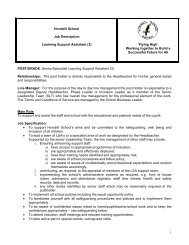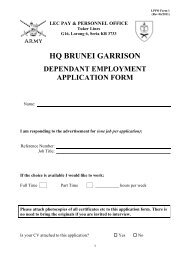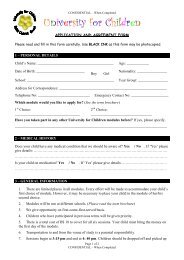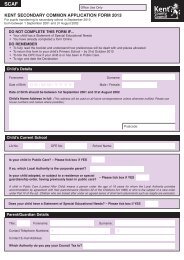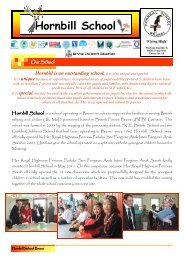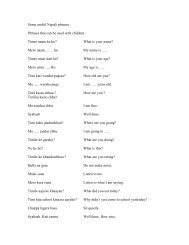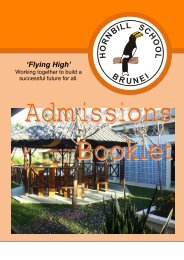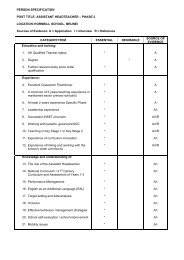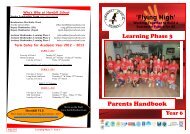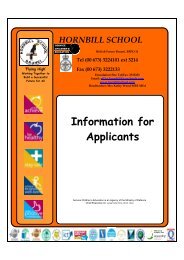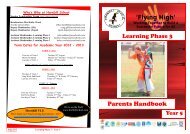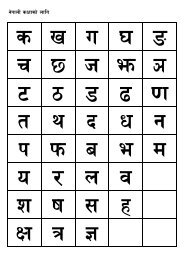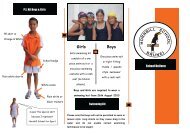2009-2010 - Hornbill School Website
2009-2010 - Hornbill School Website
2009-2010 - Hornbill School Website
You also want an ePaper? Increase the reach of your titles
YUMPU automatically turns print PDFs into web optimized ePapers that Google loves.
37<br />
We inform the children beforehand if we are marking a specific area of<br />
their work.<br />
Marking children’s work at different ages and stages<br />
Although we have common principles concerning the marking of children’s work, we<br />
accept that the task is different at various stages in each child’s development.<br />
Phase 1: In Foundation Stage children are praised and given positive feedback about<br />
work which they produce. Children receive a little sticker for significant achievement<br />
and we try to ensure that most children receive one. We celebrate achievements in<br />
class and in assembly with parents. Discussions with children regularly take place<br />
advising them on how to improve and progress.<br />
Phase 2: As far as possible, we aim to mark all work with the child. In this way we can<br />
use the marking session as an added learning and teaching experience. Our comments<br />
are usually more verbal than written because this is more appropriate to match the<br />
child’s understanding. A tick and/or the date at the end of the piece work will indicate<br />
that it has been checked by the teacher.<br />
When marking any written work our approach may vary. A very early emergent writer<br />
may read his/her efforts to the teacher who may then write the correct form<br />
underneath. More ‘advanced’ emergent writing may be marked in various ways; for<br />
example, a tick over the correct initial sounds for words or complete phonetic spellings<br />
will be used to encourage the young writer. We may correct one or two of the<br />
incorrect spellings of the first 6-12 key words. With more confident writers we may<br />
pick out two or three key or thematic words which have been mis-spelt and correct<br />
these above the error. Some of the more able children may be encouraged to learn<br />
the correct spelling using the ‘look, cover, write, check method’, or two or three key<br />
words which are mis-spelt repeatedly may be noted under their work for the children<br />
to practise. We may re-draft certain parts of a piece of writing together with the<br />
child using the teachers as scribe. We begin to encourage use of the school editing<br />
key.<br />
When marking maths: For investigative maths, we accept that there may be more than<br />
one solution and we assess the level of understanding through discussion with the child<br />
as they work through the task. When marking mathematics with younger children we<br />
point out errors in an appropriate way to show that the work needs to be corrected,<br />
e.g. as the child matures a cross may be used to show an error.<br />
Phase 3: When appropriate, we continue to mark work alongside the child, incorporating<br />
their ideas and comments within ours. This dialogue helps children understand more<br />
clearly the written comments made by the teacher about marking improvements and<br />
may provide opportunity for feedback about the quality of the piece of work.<br />
If marking alongside the child is impractical, we endeavour to provide prompt feedback<br />
by marking work ready for the next session, whilst it remains fresh in the child’s mind,<br />
and to provide some verbal feedback at a later stage in order to make written<br />
comments clear.



